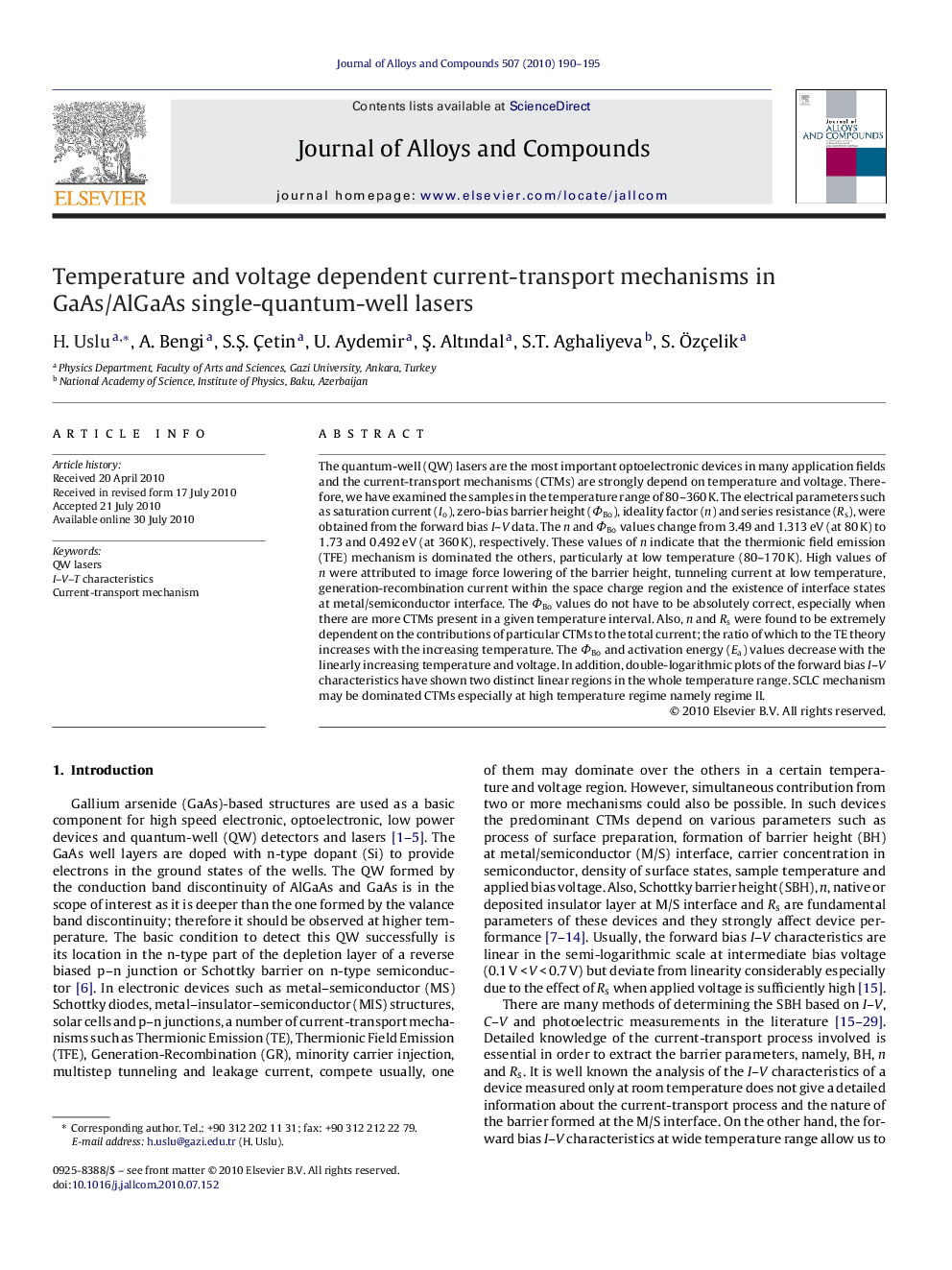| Article ID | Journal | Published Year | Pages | File Type |
|---|---|---|---|---|
| 1618236 | Journal of Alloys and Compounds | 2010 | 6 Pages |
The quantum-well (QW) lasers are the most important optoelectronic devices in many application fields and the current-transport mechanisms (CTMs) are strongly depend on temperature and voltage. Therefore, we have examined the samples in the temperature range of 80–360 K. The electrical parameters such as saturation current (Io), zero-bias barrier height (ΦBo), ideality factor (n) and series resistance (Rs), were obtained from the forward bias I–V data. The n and ΦBo values change from 3.49 and 1.313 eV (at 80 K) to 1.73 and 0.492 eV (at 360 K), respectively. These values of n indicate that the thermionic field emission (TFE) mechanism is dominated the others, particularly at low temperature (80–170 K). High values of n were attributed to image force lowering of the barrier height, tunneling current at low temperature, generation-recombination current within the space charge region and the existence of interface states at metal/semiconductor interface. The ΦBo values do not have to be absolutely correct, especially when there are more CTMs present in a given temperature interval. Also, n and Rs were found to be extremely dependent on the contributions of particular CTMs to the total current; the ratio of which to the TE theory increases with the increasing temperature. The ΦBo and activation energy (Ea) values decrease with the linearly increasing temperature and voltage. In addition, double-logarithmic plots of the forward bias I–V characteristics have shown two distinct linear regions in the whole temperature range. SCLC mechanism may be dominated CTMs especially at high temperature regime namely regime II.
Research highlights▶ It is well known the quantum-well (QW) lasers are the most important optoelectronic devices in many application fields. ▶ The current-transport mechanisms (CTMs) is dependent on various parameters, among them especially device temperature and bias voltage are most important parameters for semiconductor devices. ▶ The temperature dependent I–V characteristics give the important information about the current-conduction mechanisms. ▶ A number of CTMs such as thermionic emission (TE), thermionic field emission (TFE), minority carrier injection, recombination-generation and multistep tunneling compete and usually, one of them may dominate over the others in a certain temperature and applied bias voltage region. ▶ Therefore, the CTMs of GaAs/AlGaAs SQW lasers have been investigated using forward and reverse bias I–V measurements methods in the temperature range of 80–360 K. ▶ The analysis of the experimental data of our devices indicated that the CTM was controlled by TFE mechanism below 170 K and TE mechanism above 200 K.
